When visiting the mystical kingdom of Bhutan, shopping is a delightful way to immerse yourself in the local culture and bring home unique treasures that embody the spirit of this Himalayan paradise. Bhutan offers an array of traditional and handcrafted items, from vibrant Bhutanese textiles and intricate Thangkas paintings to exquisite Bhutanese handicrafts and durable Bhutanese wood crafts. Whether exploring the bustling Thimphu markets or seeking out authentic Bhutanese goods in quaint local shops, shoppers can discover a wealth of high-quality products that reflect the nation’s rich artistic heritage and Buddhist traditions. Not only is shopping in Bhutan an opportunity to acquire unique souvenirs like hand-woven Bhutan scarves and Bhutanese jewelry, but it also supports the local artisans and preserves the traditional crafts that are an integral part of Bhutanese identity.
At Amen Bhutan Tours and Treks, we pride ourselves on being the premier choice for visitors seeking an unparalleled shopping experience in Bhutan. Our in-depth knowledge of the local markets and our strong relationships with artisans ensure that our guests receive access to the finest Bhutanese handicrafts, Bhutanese textiles, and other authentic Bhutanese goods. We carefully curate our shopping tours to include visits to the best Thimphu markets, exclusive Bhutanese art shops, and hidden gems where you can find one-of-a-kind items. Our expert guides are not only well-versed in the history and significance of the products but also provide insightful tips on securing the best Bhutan shopping prices. Choosing Amen Bhutan Tours and Treks means enjoying a seamless and enriching shopping experience that captures the true essence of Bhutan’s rich cultural tapestry.
Authentic Bhutanese Handicrafts
Authentic Bhutanese handicrafts are a vibrant reflection of the nation's rich cultural heritage and traditional craftsmanship. Here are some key types of Bhutanese handicrafts you might encounter:
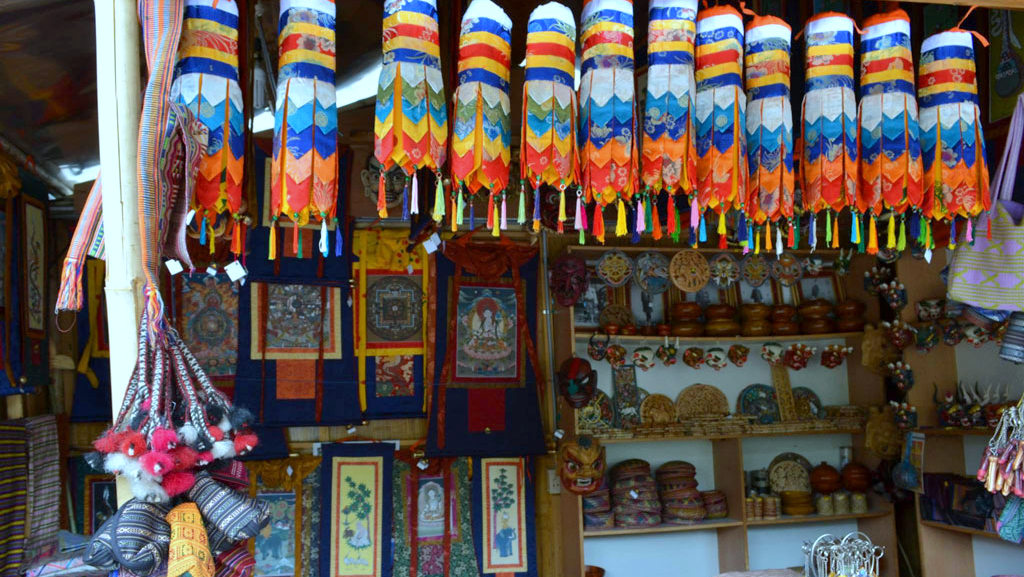
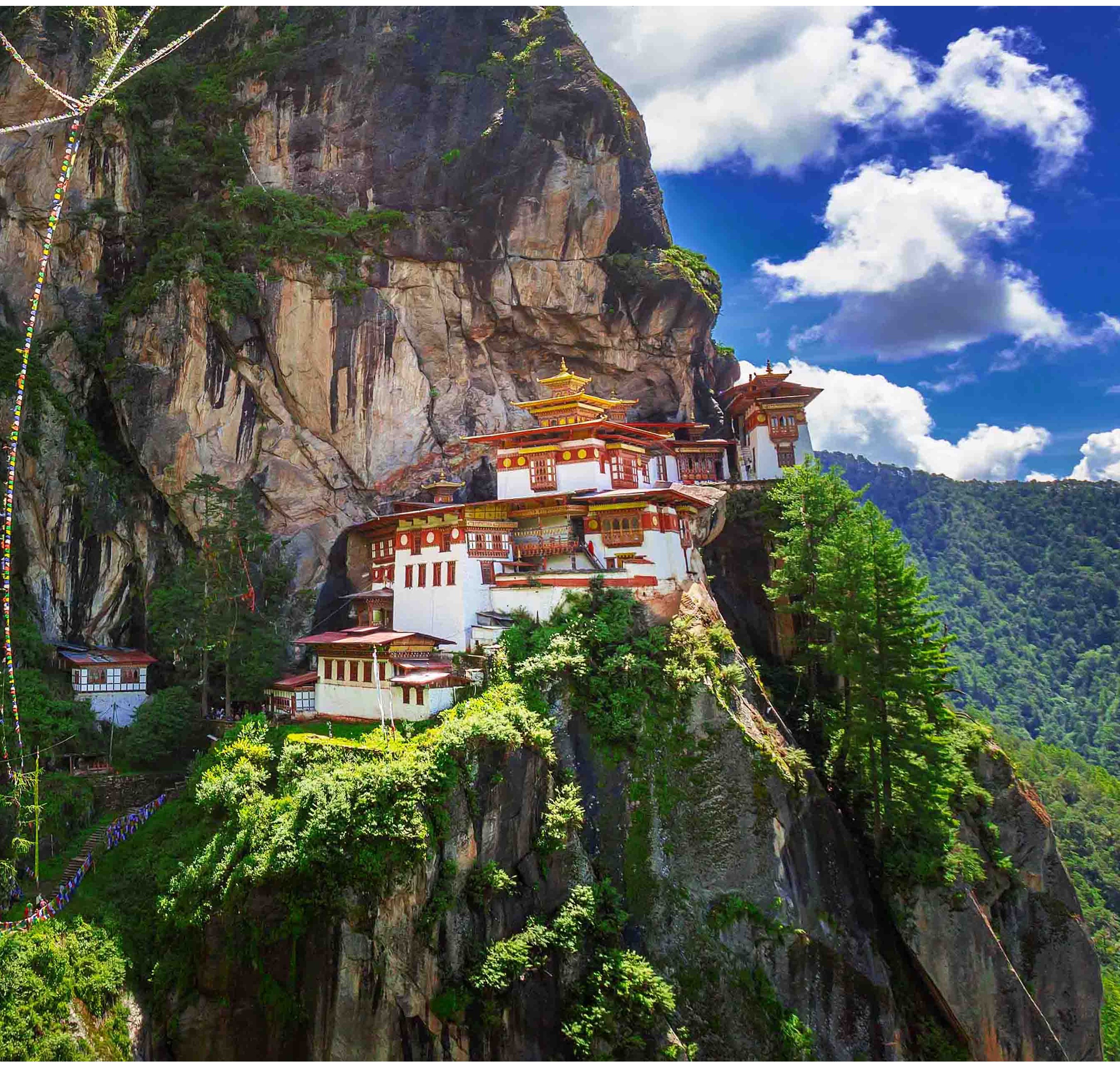
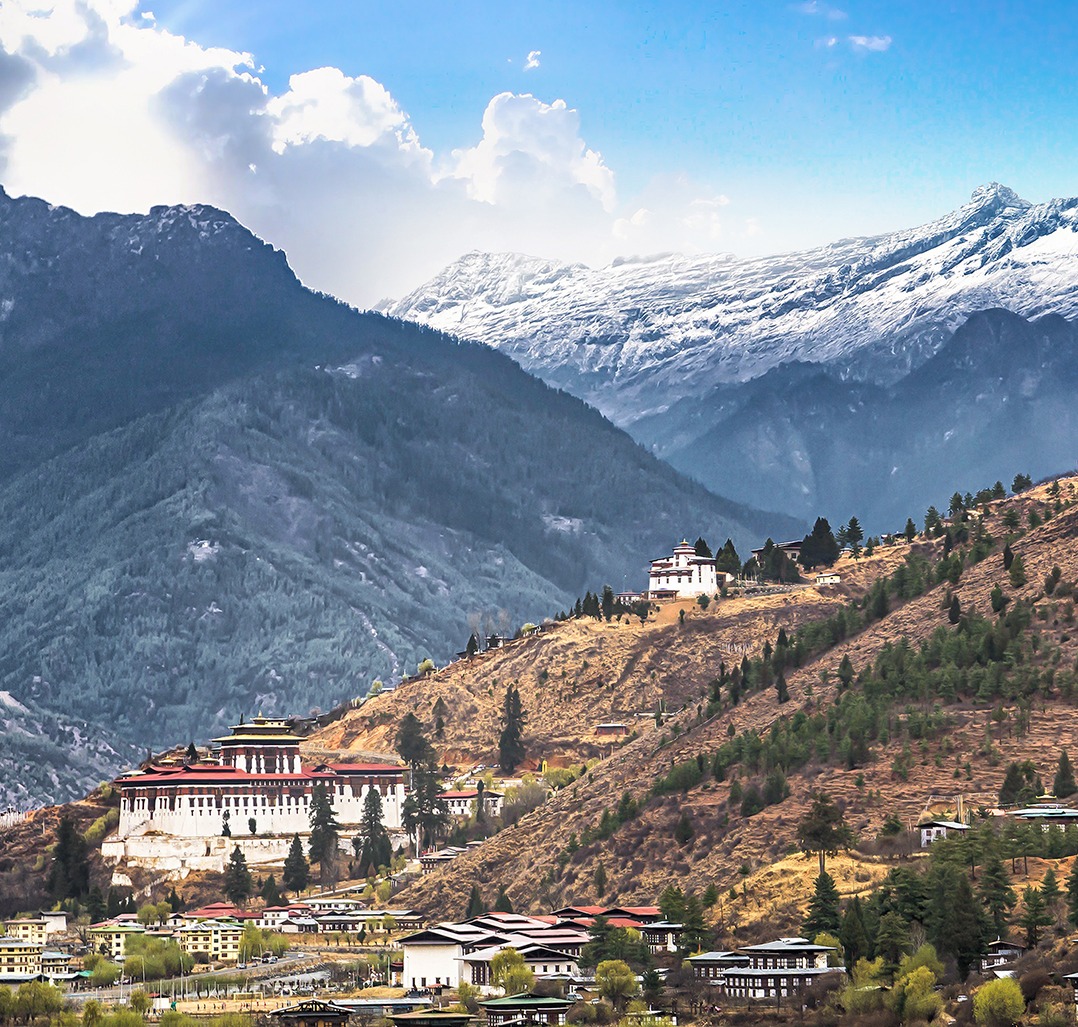
- Thangkas: Traditional Tibetan Buddhist paintings on fabric, often depicting religious figures and symbols.
- Wood Carvings: Intricate carvings on furniture, religious items, and household utensils, showcasing the detailed craftsmanship.
- Handmade Paper: Known locally as 'Desho', this paper is made from the bark of the Daphne and Edgeworthia plants, traditionally used for religious texts and nowadays for various artistic purposes.
- Woven Baskets: Crafted from bamboo and cane, these baskets are used for a variety of purposes, from carrying food to serving as decorative pieces.
- Textile Weaving: Includes items like scarves, shawls, and the traditional Gho and Kira, woven from silk or wool with vibrant patterns.
- Metal Work: Includes items like traditional handmade swords, religious bells, and dorjes (ritual objects), all crafted using age-old techniques.
- Jewelry: Often made from silver and adorned with local and semi-precious stones, reflecting both traditional and modern designs.
- Ceramics: Pottery that ranges from functional kitchenware to decorative items, often featuring traditional Bhutanese motifs.
- Mask Making: Wooden masks used in religious dances and ceremonies, painted in vivid colors and expressive styles.
These handicrafts are not just products; they are a testament to the Bhutanese people's dedication to preserving their ancestral skills and traditions.
Exquisite Textiles
Exquisite textiles are a hallmark of Bhutanese craftsmanship, renowned for their beauty, intricacy, and cultural significance. Shopping for textiles in Bhutan offers a unique insight into the nation's artisan traditions and provides an opportunity to acquire some truly unique pieces. Here are some key points about Bhutanese textiles to consider while shopping:
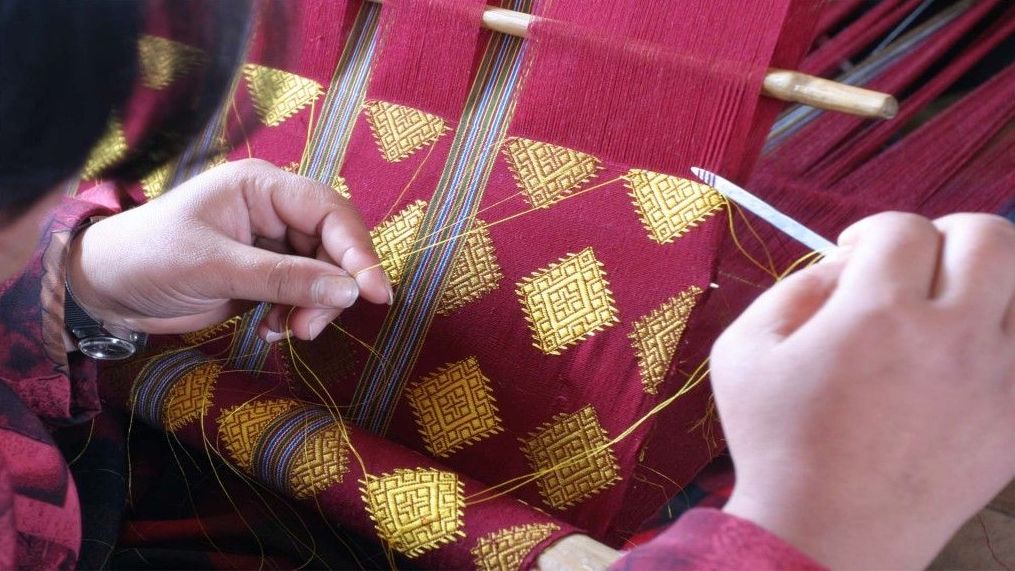
- Hand-Woven Techniques: Bhutanese textiles are famously hand-woven, using techniques that have been passed down through generations. The weaving is done on traditional backstrap or frame looms, which allows for intricate patterns and designs.
- Silk and Wool: The primary materials used in Bhutanese textiles are silk and wool, with silk being used for more formal and high-quality fabrics, often reserved for special occasions and rituals.
- Vibrant Colors and Patterns: The textiles are known for their vibrant colors, which are traditionally derived from natural dyes. The patterns can range from simple stripes to complex motifs that may include symbols, flora, and fauna, each with its own meaning and significance.
- Traditional Attire: The national dress, such as the 'Kira' for women and the 'Gho' for men, is made from these textiles. The Kira is an ankle-length dress accompanied by a light outer jacket known as a Tego, while the Gho is a knee-length robe tied at the waist by a belt called a Kera.
- Scarves and Shawls: Apart from traditional clothing, Bhutanese textiles are also made into scarves, shawls, and blankets. These items are popular among tourists for their practicality and ease of transport.
- High Value and Collectibility: Due to their craftsmanship, quality of materials, and cultural importance, Bhutanese textiles are considered valuable items. They are often collected by textile enthusiasts and can be seen as a form of investment.
- Cultural Expression: Each region in Bhutan has its own unique patterns and styles, making textiles a rich tapestry of the country’s diverse cultural heritage.
- Supporting Local Artisans: Purchasing these textiles not only provides you with a beautiful, handmade product but also supports the local artisans and helps preserve this important aspect of Bhutanese culture.
When shopping for Bhutanese textiles, visiting local markets, cooperatives, and specialty shops offers the best chance to see a wide range of products and to learn more about the stories and traditions behind them.
Traditional Clothing
Shopping for traditional clothing in Bhutan is an immersive experience that allows visitors to appreciate the deep cultural roots and exceptional craftsmanship of the local artisans. Traditional Bhutanese clothing is not just about style; it’s imbued with cultural significance and is a vivid representation of the nation's heritage. Here are some key aspects of traditional clothing to consider while shopping in Bhutan:

- Gho for Men: The Gho is a knee-length robe-like garment tied at the waist with a handwoven belt called a Kera. Traditionally worn by men, it is both comfortable and practical, suited to the Bhutanese climate and lifestyle. The Gho typically features rich colors and patterns, with variations that indicate the wearer’s social status or the formality of occasions.
- Kira for Women: The Kira is an ankle-length dress that is draped and folded around the body, pinned at both shoulders, usually with silver brooches, and tied at the waist with a Kera. It is paired with a blouse called a Wonju underneath and a light jacket known as a Tego over the top. The Kira showcases elaborate designs and vibrant colors, often indicative of the region from which it originates.
- Festive Attire: During traditional festivals and celebrations, Bhutanese people wear particularly elaborate and intricately designed Ghos and Kiras. These festival clothes are often richer in color and detail, including gold threading and additional symbolic motifs.
- Textile Quality: Traditional clothing is made from high-quality materials such as silk, cotton, and wool. The choice of fabric often depends on the season and the occasion, with silk being more prevalent in festive and formal attire.
- Regional Variations: Different regions in Bhutan have unique styles and patterns in their traditional clothing, reflecting local customs and weaving techniques. This regional diversity is celebrated and is a point of pride among the Bhutanese.
- Tailoring Services: While ready-made traditional attire is available, many shops offer tailoring services to ensure a perfect fit, which is important as the way the clothing is worn can signify different meanings and statuses.
- Supporting Local Weavers: Buying traditional Bhutanese clothing supports the local economy and helps preserve the art of traditional weaving, which is a vital part of Bhutan's cultural identity.
- Souvenirs: Traditional clothing can also serve as a unique and meaningful souvenir, offering a lasting reminder of your visit to Bhutan and its rich cultural tapestry.
When shopping for traditional Bhutanese clothing, it’s beneficial to visit local markets and specialty stores where you can get authentic pieces. You may also find cooperative shops or government-run outlets that sell certified authentic clothing, ensuring that artisans are fairly compensated for their work.
Thangkas and Religious Artifacts
Shopping for Thangkas and religious artifacts in Bhutan is a unique experience that connects visitors to the spiritual and artistic traditions of this Himalayan kingdom. Here’s what to consider when looking for these meaningful items:
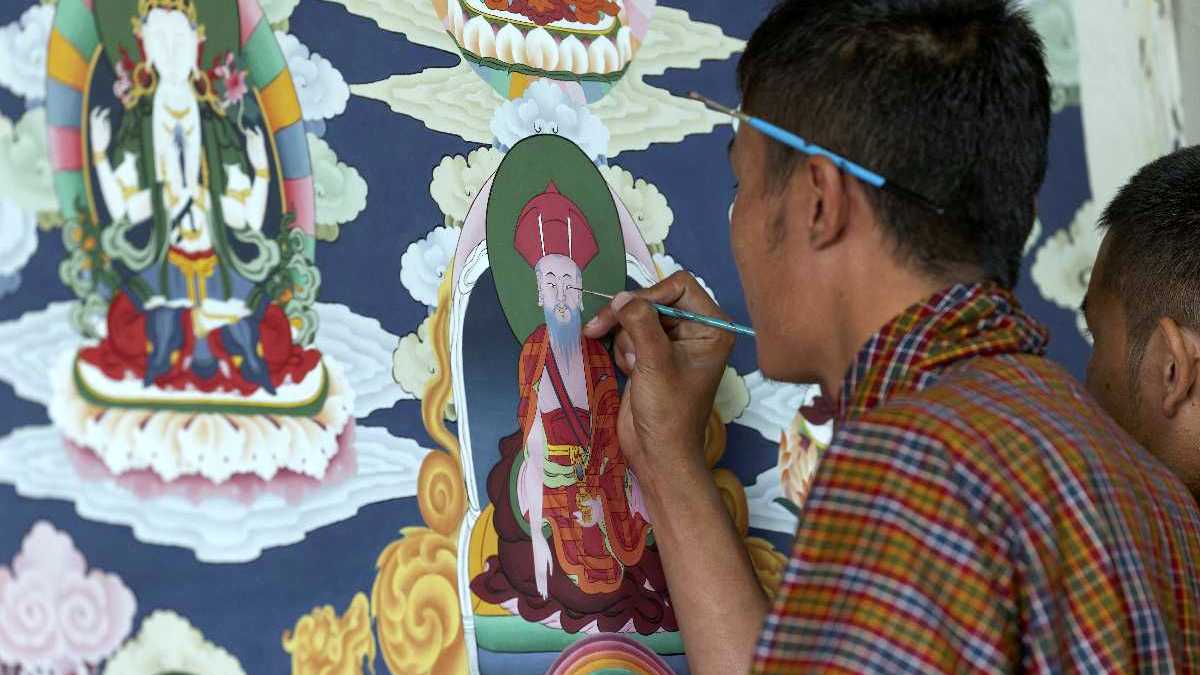
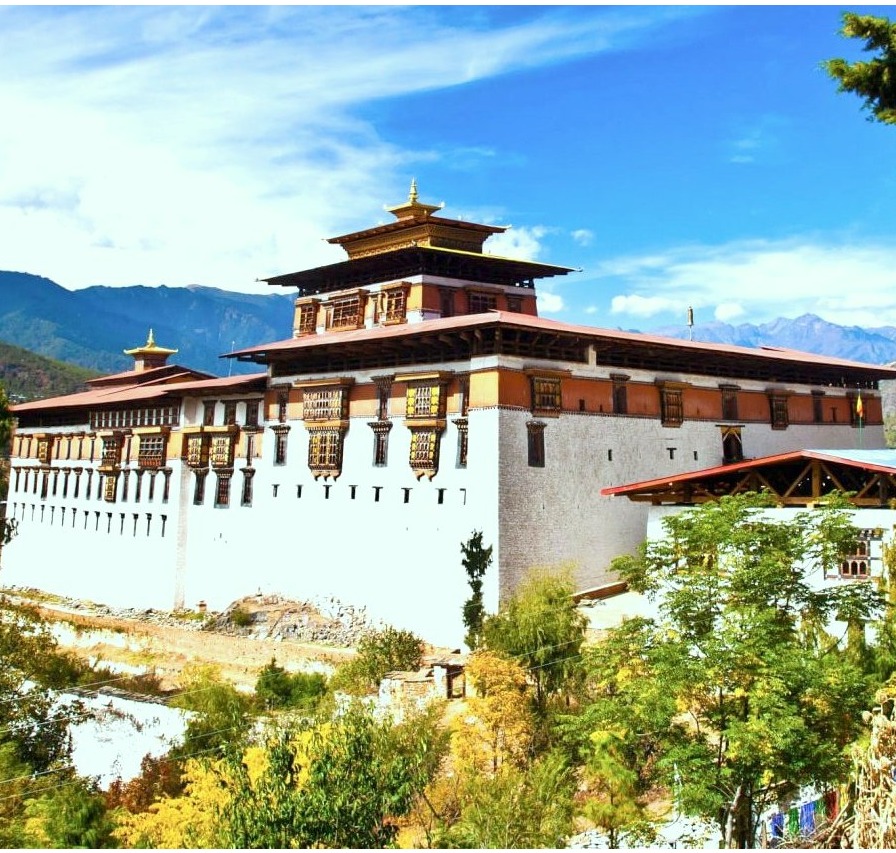
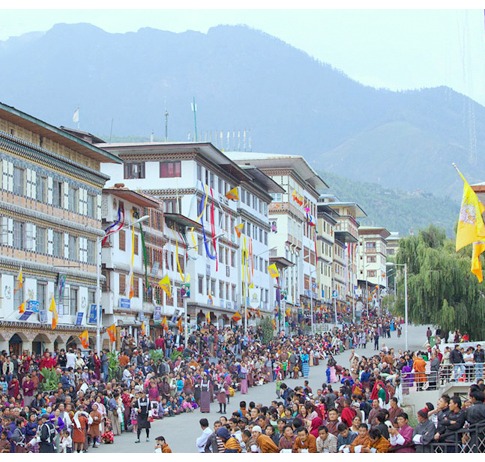
Thangkas
- Artistic and Spiritual Significance: Thangkas are traditional Tibetan Buddhist paintings on fabric, usually silk appliqué or cotton. These paintings serve both as beautiful artworks and as important aids in meditation and teaching, depicting various Buddhist deities, scenes, and mandalas.
- Variety and Styles: Thangkas come in various styles, with differences in color, form, and detail depending on regional traditions and the specific school of Buddhism they represent.
- Craftsmanship: The creation of a Thangka is a highly skilled process that requires precise technique and can take several months to complete, depending on the complexity of the design.
Religious Artifacts
- Prayer Wheels: These cylindrical wheels are often filled with mantras and are spun to accumulate wisdom, merit, and to purify negativities. They come in various sizes—from handheld to large, standalone installations.
- Prayer Beads (Mala): Used for counting mantras while meditating, these beads are made from various materials such as wood, seeds, or semi-precious stones.
- Ritual Instruments: Items like bells, dorjes (vajras), and singing bowls are used in Buddhist rituals and can be found in many shops around Bhutan.
- Statues and Icons: Small statues of Buddha, Padmasambhava, and other deities are common. These are made from metals like bronze and are often beautifully adorned.
Exploring the spiritual art and artifacts of Bhutan provides a deeper insight into the country’s Buddhist traditions and offers a unique way to connect with its profound religious culture.
Unique Jewelry
Shopping for unique jewelry in Bhutan is a delightful experience, offering visitors the chance to acquire distinctive and meaningful adornments that are deeply rooted in the country's cultural and artistic heritage. Here’s a closer look at what makes Bhutanese jewelry so special and tips on where to find these exquisite pieces:

Types of Bhutanese Jewelry
- Silver and Gold: Jewelry in Bhutan is predominantly made from silver, which is often gilded with gold. These metals are favored for their durability and aesthetic appeal.
- Traditional Designs: Many pieces feature traditional motifs such as dragons, which symbolize protection, and other Buddhist symbols like the endless knot or dorje.
- Semi-Precious Stones: Bhutanese jewelers frequently incorporate local and imported semi-precious stones into their designs. Common stones include turquoise, coral, and agates, each adding a unique splash of color and meaning to the jewelry.
- Beaded Necklaces: These are a popular form of jewelry, often made with dzee beads, which are considered highly valuable and are said to bring good luck to the wearer.
Handcrafted Artistry
- Handmade Techniques: Jewelry making in Bhutan is typically done by hand, ensuring that each piece is unique. The handcrafted nature means that no two pieces are exactly alike, adding to their charm and value.
- Cultural Influence: The designs often reflect the rich cultural tapestry of Bhutan, with influences from Tibetan Buddhism and indigenous beliefs shaping the aesthetics.
Shopping for jewelry in Bhutan not only allows you to bring home a piece of Bhutanese beauty but also offers a deep connection to the history and culture of this fascinating country. Whether you choose a simple handmade bracelet or an elaborate necklace, each piece tells a story of Bhutan's rich artistic tradition.
Bhutanese Prayer Flags
Shopping for Bhutanese prayer flags during your visit to Bhutan is a deeply symbolic experience, reflecting the spiritual and cultural ethos of the country. Here are some highlights to consider when purchasing these colorful emblems of prayer and peace:
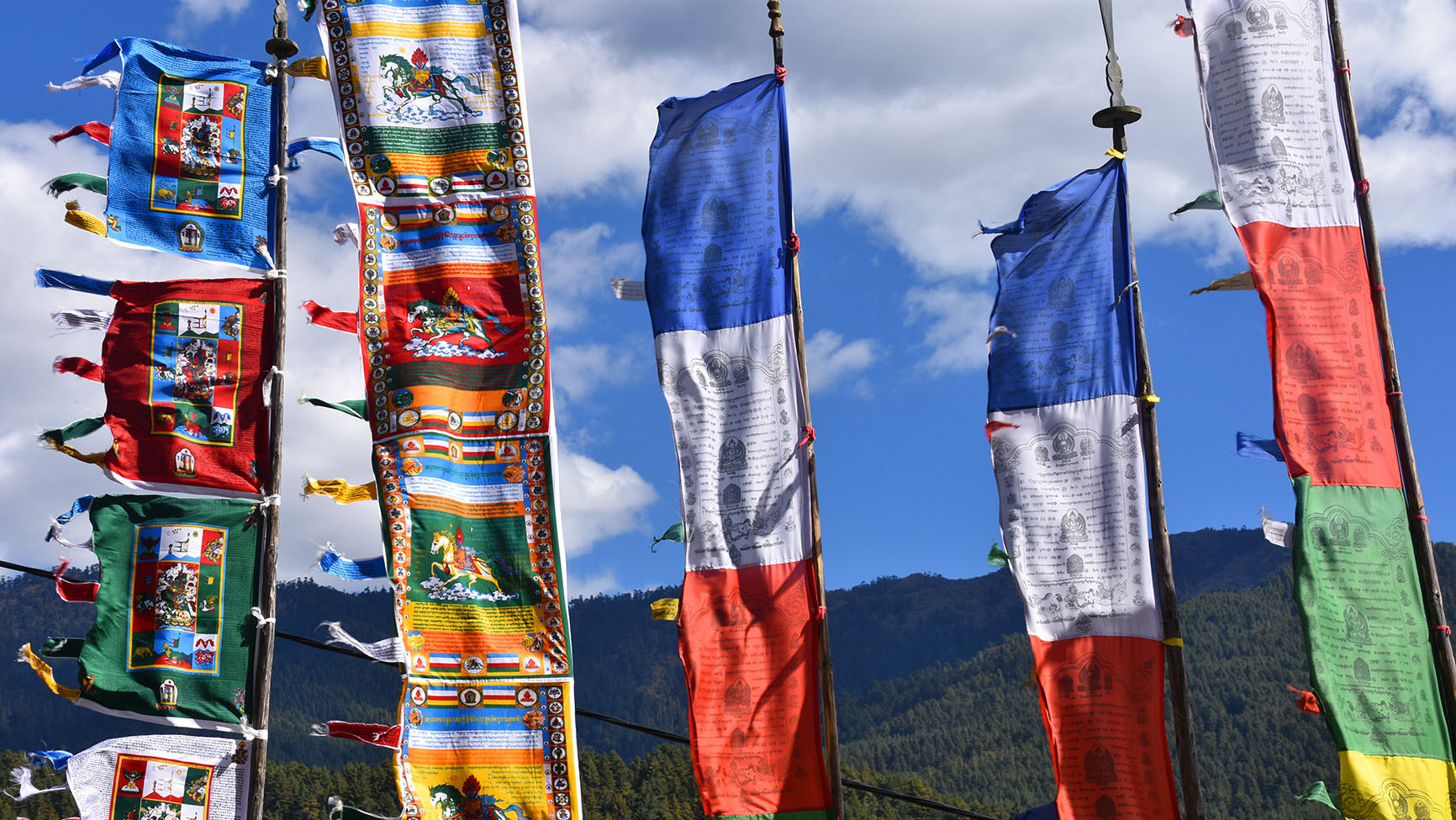
- Symbolic Meaning: Bhutanese prayer flags are imbued with spiritual significance. Each color represents elements of nature—blue for sky, white for air, red for fire, green for water, and yellow for earth. The flags are believed to spread goodwill and compassion with every breeze.
- Variety: There are two main types of prayer flags in Bhutan—horizontal ones called Lung Dar and vertical ones known as Darchor. Both types carry mantras, prayers, and images of deities, which are believed to be activated by the wind.
- Handcrafted Quality: The flags are traditionally woodblock-printed by hand, making each flag unique. The quality of the fabric and the clarity of the print are indicators of their authenticity and the skill of the artisans.
- Spiritual Decor: Besides their religious purpose, these flags are also used decoratively by many to bring a sense of peace and harmony to homes or gardens, embodying the essence of Bhutanese spiritual practices.
- Support Local Artisans: Purchasing prayer flags supports the local artisans who maintain this traditional craft. Often, these artisans are from rural communities, and buying their products helps sustain their livelihood.
- Cultural Etiquette: It's important to handle prayer flags with respect due to their religious significance. They should be hung at a height where they will not be stepped over or sat upon.
- Sustainable Souvenir: As prayer flags naturally disintegrate over time, they symbolize the Buddhist belief in the impermanence of life. They make a sustainable souvenir, eventually returning to the earth without leaving waste.
- Ideal Gift: Prayer flags make meaningful gifts, intended to bestow blessings and good luck upon the recipient, making them a thoughtful purchase for friends and family back home.
Purchasing Bhutanese prayer flags is not just about acquiring a physical item; it's a way to participate in and carry home a piece of Bhutan's spiritual heritage. They offer a unique way to connect with and remember the profound tranquility and beauty of Bhutan.
Bhutanese Cuisine Products
Shopping for Bhutanese cuisine products offers a delightful insight into the rich gastronomic culture of Bhutan. Here are some highlights and suggestions on what food products to look for during your visit:
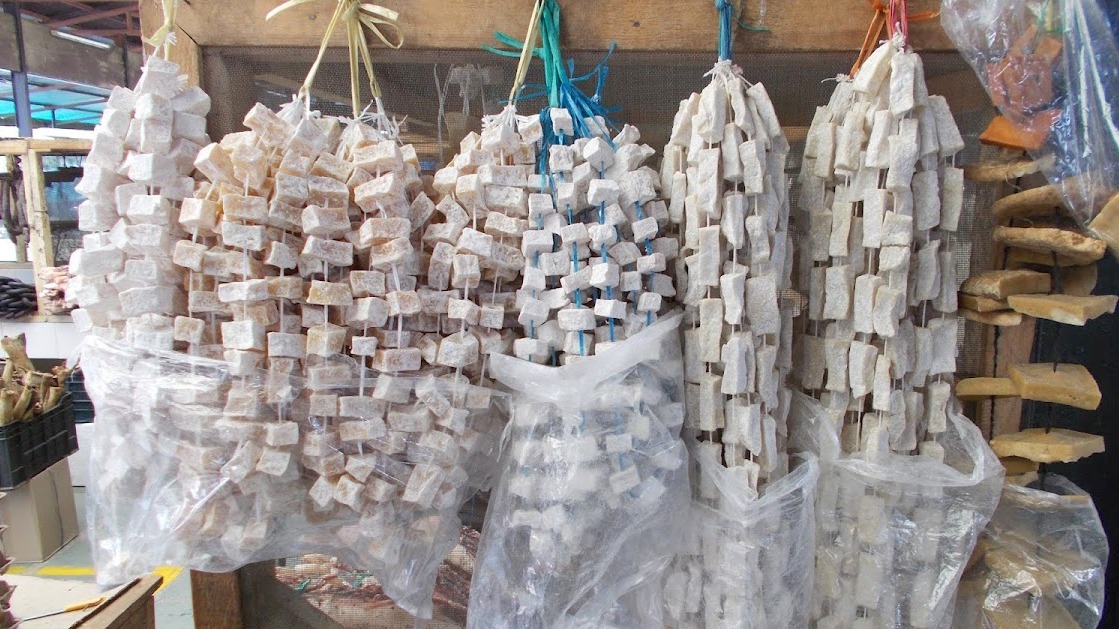


Dried Cheese (Chhurpi)
- Long-lasting Snack: Chhurpi is a hard, dried cheese that is a popular snack in Bhutan. It's known for its strong flavor and can be chewed like a betel nut.
- Cooking Ingredient: Apart from being a snack, it's also used in cooking various traditional dishes, adding a unique flavor.
Red Rice
- Staple Diet: Red rice is a Bhutanese staple, known for its nutty flavor and somewhat sticky texture when cooked. It's the main side dish for most meals.
- Health Benefits: This rice is rich in minerals and has a lower glycemic index than white rice, making it a healthier option.
Buckwheat Products
- Versatile Ingredient: Buckwheat is extensively used in Bhutanese cuisine, especially in the Bumthang region. You can find buckwheat flour, noodles, and pancakes.
- Traditional Dishes: Buckwheat noodles (puta) and pancakes (kule) are traditional dishes worth trying and taking home.
Ema Datshi Sauce
- Iconic Dish: Ema Datshi is the national dish of Bhutan, made primarily from chili peppers and cheese.
- Ready-Made Mixes: Some stores sell ready-made Ema Datshi mixes, which include dried ingredients and spices, making it easy to cook the dish at home.
Bhutanese Honey
- Natural Sweetener: Bhutan's pristine environment makes it a perfect place for harvesting high-quality, organic honey.
- Varieties: Look for different floral varieties depending on the region and season, each with its unique flavor profile.
Sichuan Peppers (Thingye)
- Distinctive Spice: Thingye is used to flavor many Bhutanese dishes, offering a unique tingling sensation.
- Medicinal Properties: Apart from its culinary use, it's also known for its medicinal properties.
Himalayan Herbs and Spices
- Wide Range: Bhutanese cuisine makes extensive use of locally grown herbs and spices. These include lemongrass, ginger, turmeric, and various mountain herbs.
- Tea Blends: Many of these herbs are also used in traditional Bhutanese herbal teas, which are both soothing and medicinal.
Bhutanese Spirits
- Traditional Brews: Bhutan has a variety of traditional alcoholic beverages, such as Ara (a distilled alcoholic beverage), Sinchang (a milder version of Ara), and Bangchang (fermented grains).
- Local Experience: These spirits offer a taste of Bhutan's local brewing traditions and can be a unique gift or souvenir.
Exploring Bhutanese cuisine through its diverse food products provides not only a taste but also a tangible connection to Bhutanese culture and traditions. Whether for personal enjoyment or as gifts for loved ones, these products offer a unique culinary experience.
Shopping Tips
Shopping in Bhutan offers an enriching and memorable experience that extends beyond mere acquisition of goods to a deeper engagement with the country's rich cultural and spiritual heritage. Whether you're exploring the vibrant markets for Bhutanese handicrafts, admiring the intricate Thangkas paintings, or tasting the unique flavors of Bhutanese cuisine, each purchase supports local artisans and preserves traditional crafts. From the hand-woven Bhutanese textiles to the unique Bhutanese jewelry and spiritual artifacts, every item has a story to tell. Shopping in Bhutan not only allows you to bring home a piece of Bhutanese tradition and beauty but also offers a meaningful connection to the kingdom’s values of preservation, quality, and authenticity.
FAQs on Shopping in Bhutan
Q: What are the unique items to buy in Bhutan?
A: Bhutan offers a variety of unique items such as:
- Bhutanese Handicrafts: Wooden bowls, traditional masks, and handwoven baskets.
- Textiles: Hand-woven scarves, shawls, and traditional attire like Ghos and Kiras.
- Thangkas Paintings: Religious scroll paintings popular as souvenirs.
- Bhutanese Jewelry: Typically made from silver and adorned with semi-precious stones.
- Prayer Flags and Wheels: Commonly used in Buddhist practices.
Q: Where is the best place to shop in Bhutan?
A: Major shopping destinations include:
- Thimphu: Offers a wide range of products from textiles to handicrafts.
- Paro: Known for exquisite jewelry and traditional clothing shops.
- Bumthang: Famous for wool products and cheeses.
Q: Are prices fixed in shops, or is bargaining acceptable?
A: Prices are generally fixed in established shops, but bargaining is accepted and common in local markets. Gentle negotiation is part of the local shopping culture.
Q: Can I use credit cards for shopping in Bhutan?
A: Credit cards are accepted in many shops and hotels, particularly in major towns. It's advisable to carry some local currency for purchases in smaller shops or rural areas.
Q: Are there any restrictions on what I can take out of the country?
A: Yes, restrictions apply especially to antiques and religious artifacts. It's important to obtain the necessary permissions for items considered antiques or culturally significant.
Q: What is the best time to go shopping in Bhutan?
A: Shopping can be enjoyed year-round, but the ideal times are during the tourist seasons in spring (March to May) and fall (September to November).
Q: How can I ensure that what I buy is authentic Bhutanese produce?
A: Shop at reputable stores, especially those recommended by local guides or those that are government-certified as sellers of authentic Bhutanese goods.
Q: What should I know about shopping for Bhutanese textiles?
A: Look for quality and authenticity, particularly in the dyes and patterns used. Purchasing from government-run or certified local artisan cooperatives ensures authenticity.
If you are looking for tour packages in Bhutan please click here
If you need any further information, please contact us, Email: at info@amenbhutan.com , Phone (Whatsapp or Viber) +975-1755-6636